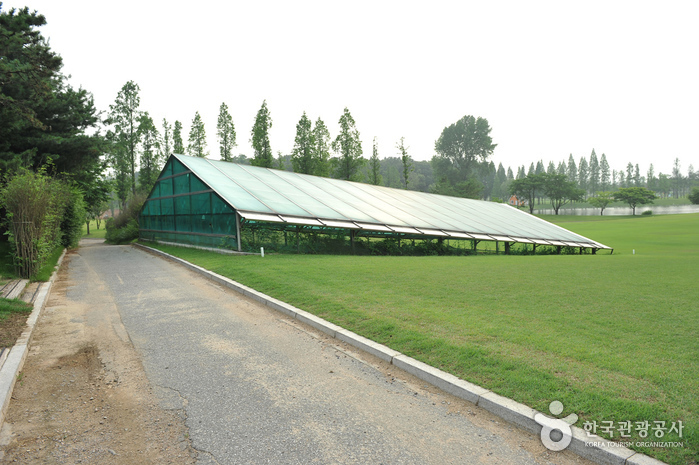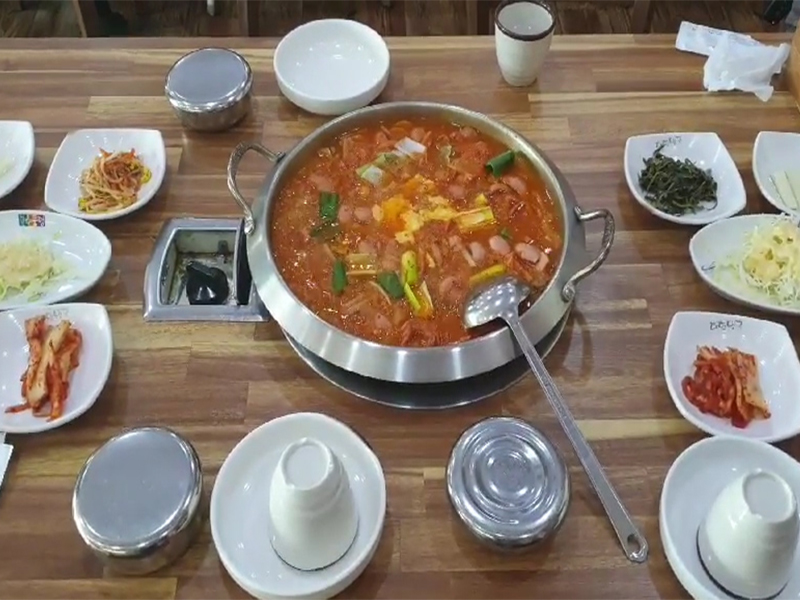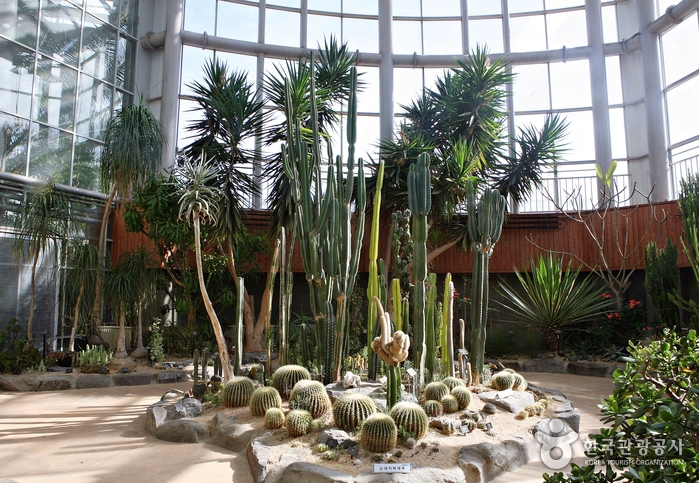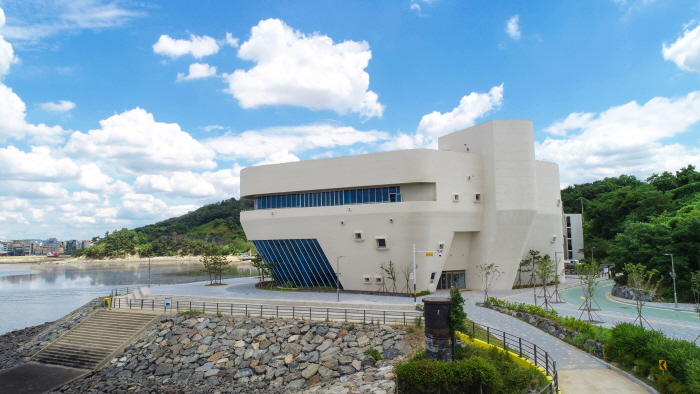Olive Young - Bucheon Homeplus Yeowol Branch [Tax Refund Shop] (올리브영 홈플러스부천여월)
12.3Km 2024-04-18
1F, 663, Sosa-ro, Bucheon-si, Gyeonggi-do
-
Homeplus - Bucheon Yeowol Branch [Tax Refund Shop] (홈플러스 부천여월)
12.3Km 2024-04-23
663, Sosa-ro, Bucheon-si, Gyeonggi-do
-
Incheon Gyeongseo-dong Nokcheongja Kiln Site (인천 경서동 녹청자 요지)
12.4Km 2021-04-23
54, Doyoji-ro, Seo-gu, Incheon
+82-32-440-4063
The Nokcheongja (Green Celadon) Kiln Site was designated as Historic Site No. 211 in May 1970. On December 9, 1984, the 82.6 ㎥ of the protective film was restored here. In addition, the unearthed models consisted of bowls and plates, as well as porcelain and pots. The colors of the glaze are greenish brown and dark green, opaque and non-glossy, and there are spots on the surface, but this is the component of the glaze. It is believed to have come from the influence of the special structure of the kiln and the firing temperature.
Nokcheongja Museum (녹청자박물관)
12.4Km 2021-10-23
54, Doyoji-ro, Seo-gu, Incheon
+82-32-563-4341
Since opening in 2002, the Nokcheongja Museum has been preserving and exhibiting academic materials about the Green Celadon Kiln Site, a Historic Site designated in 1970. It is the only museum dedicated to celadons in Incheon. The museum is divided into the History Exhibition Hall where visitors can observe the celadon making process and the Special Exhibition Hall that displays modern-day celadons. In addition to the two indoor exhibition halls, the museum also has an outdoor exhibition site with a collection of approximately 200 donated potteries, ranging from traditional to recently trending designs.
Pureun Arboretum & Hang-dong Railroad (푸른수목원&항동철길)
12.4Km 2025-01-17
240 Yeondong-ro, Guro-gu, Seoul
Pureun Arboretum is a botanical garden boasting well-established ecological parks and scenic walking trails. It encompasses diverse themed gardens, including the Wildflower Garden, Hydrangea Garden, Conifer Garden, Broadleaf Tree Garden, Bulbous Plant Garden, Wetland Garden, and Rose Garden, complemented by an Visitor Center. The Forest Learning School, functioning as a greenhouse, showcases plants from various corners of the globe and hosts educational programs. Visitors can avail themselves of facilities like the book café, a café, and a library. Additionally, the arboretum is intersected by the abandoned railroad tracks of Hang-dong.
LG Best Shop - Sihwa Branch [Tax Refund Shop] (엘지베스트샵 시화점)
12.4Km 2024-04-18
230, Jeongwang-daero, Siheung-si, Gyeonggi-do
-
Himart - Ojeong Branch [Tax Refund Shop] (하이마트 오정점)
12.5Km 2024-04-18
672, Sosa-ro, Bucheon-si, Gyeonggi-do
-
Daehanminguk Budaejjigae (대한민국부대찌개)
12.7Km 2021-03-18
184, Seongo-ro Bucheon-si Gyeonggi-do
+82-32-682-3366
This is a Korean cuisine located in Bucheon-si, Gyeonggi-do. The representative menu is sausage stew. It is located near Ojeong Grand Park, where it is good to take a light walk after eating.
Bucheon Botanical Garden (부천식물원)
12.8Km 2021-04-08
660, Gilju-ro, Bucheon-si, Gyeonggi-do
+82-32-625-4877
Bucheon Botanical Garden houses many rare plants, spread across two above-ground floors and two underground floors in a 27,124 ㎡ building. The building was designed in the shape of a peach flower, the symbol of Bucheon, and has one central garden and five themed gardens: general plant garden, aquatic plant garden, tropical plant garden, succulent plant garden, and indigenous plant garden.
In the central garden, 9,975 trees representing some 310 species are planted. With a forest nearby, the botanical garden offers a great nature learning experience for visitors. Together with the Natural Ecology Museum and Children Zoo nearby, it is also a great cultural and recreational destination.
Siheung Oido Museum (시흥오이도박물관)
12.8Km 2024-10-24
332 Oido-ro, Siheung-si, Gyeonggi-do
The place of Kuk Yeonsoo and Choi Ung's hug from behind
Oido, an island that was isolated from the mainland until 100 years ago, became inland with the creation of the Gunja Salt Farm and the construction of the Sihwa Embankment. It is the largest shell mound historic site on the west coast, and various Neolithic artifacts have been excavated, and the entire island has been designated as Historic Site No. 441. Inside the museum, which records the history of Oido, there are various interesting experiences and exhibitions that give a glimpse of life in the Neolithic Age. Outside the building, there is an overpass with many pillars where Kuk Yeonsoo gave Choi Ung a back hug. On the floor of the branch, there is a sticker that reads ‘Our Beloved Summer’, so it's good to take a commemorative photo.
![Olive Young - Bucheon Homeplus Yeowol Branch [Tax Refund Shop] (올리브영 홈플러스부천여월)](http://tong.visitkorea.or.kr/cms/resource/75/2888775_image2_1.jpg)
![Homeplus - Bucheon Yeowol Branch [Tax Refund Shop] (홈플러스 부천여월)](http://tong.visitkorea.or.kr/cms/resource/68/2889168_image2_1.jpg)


![LG Best Shop - Sihwa Branch [Tax Refund Shop] (엘지베스트샵 시화점)](http://tong.visitkorea.or.kr/cms/resource/79/2890279_image2_1.jpg)
![Himart - Ojeong Branch [Tax Refund Shop] (하이마트 오정점)](http://tong.visitkorea.or.kr/cms/resource/81/2889981_image2_1.jpg)



 English
English
 한국어
한국어 日本語
日本語 中文(简体)
中文(简体) Deutsch
Deutsch Français
Français Español
Español Русский
Русский